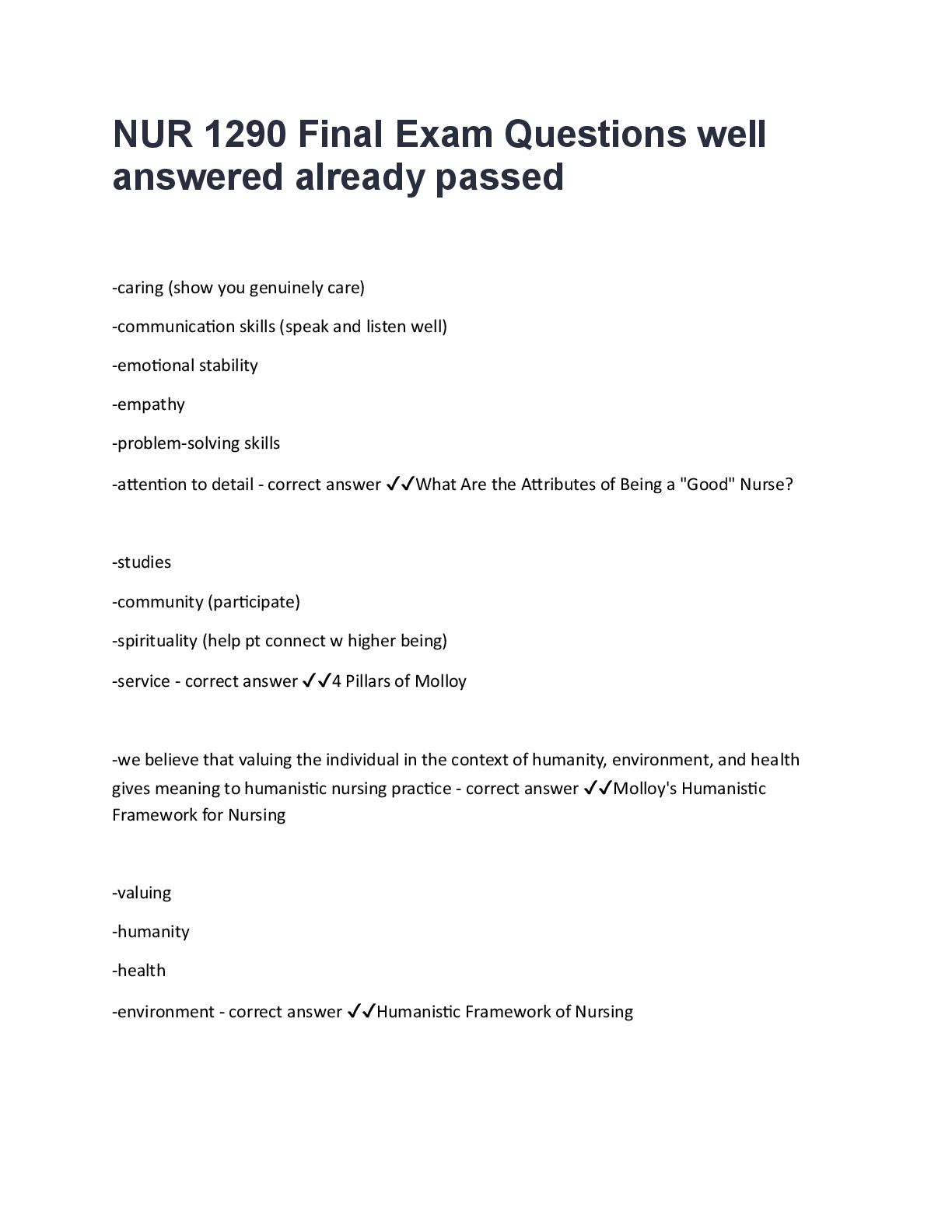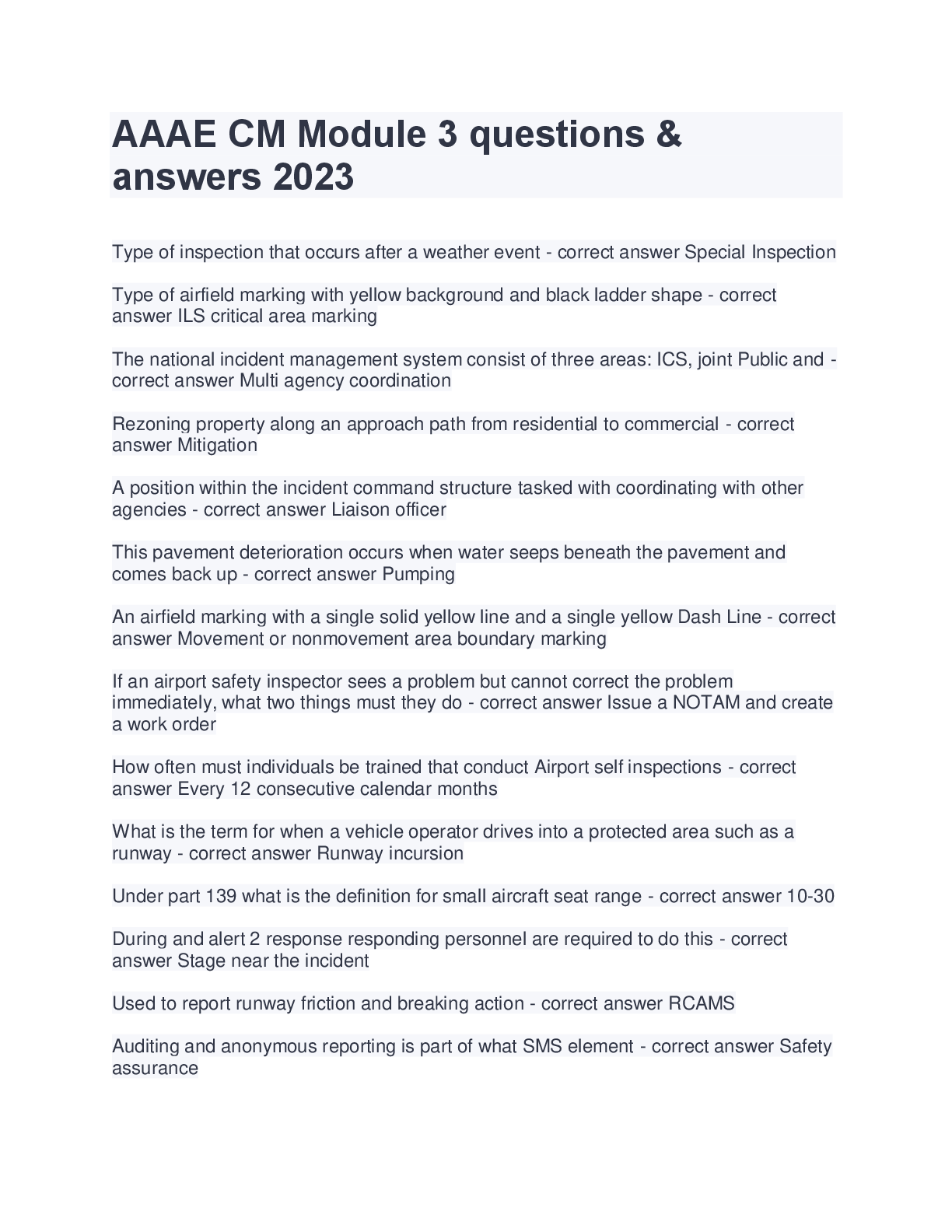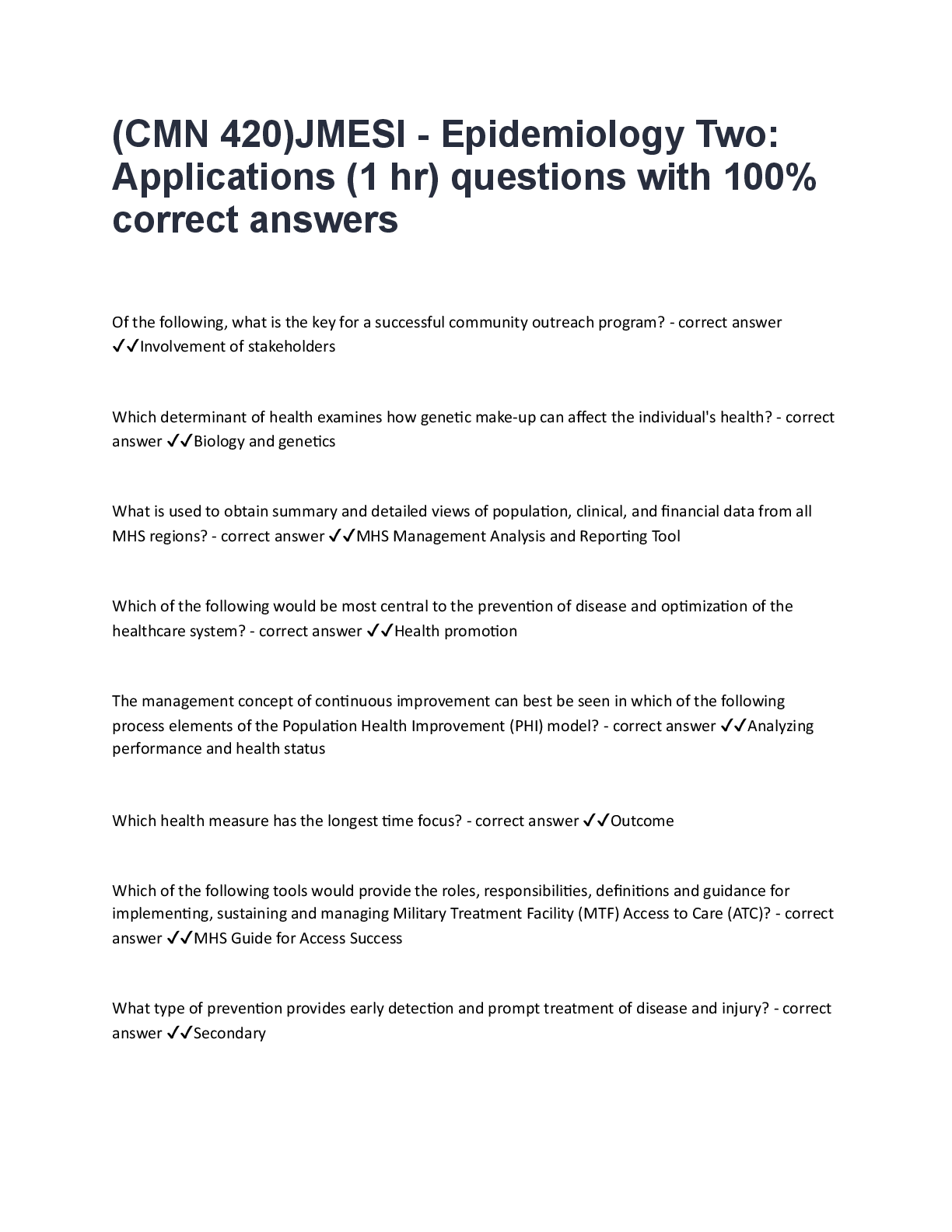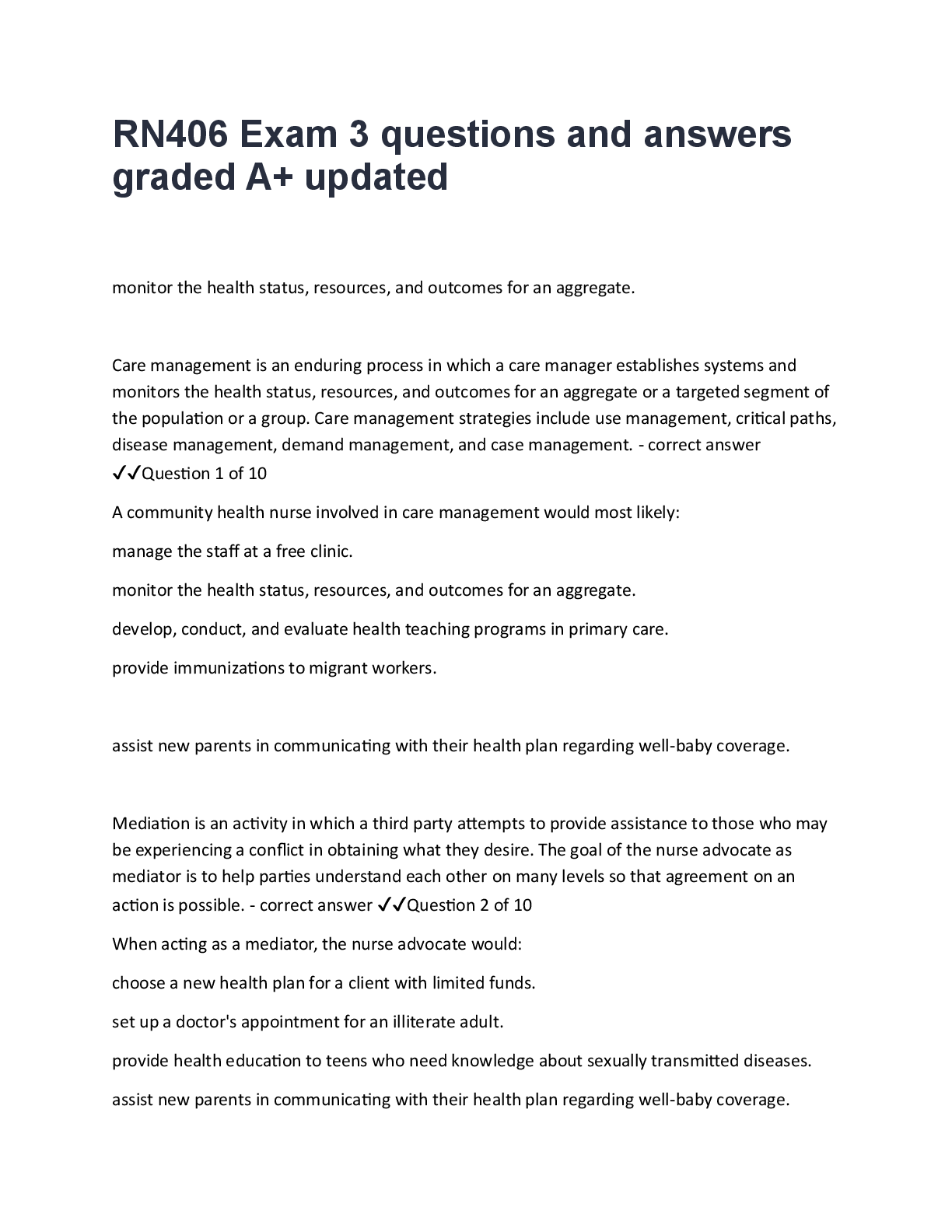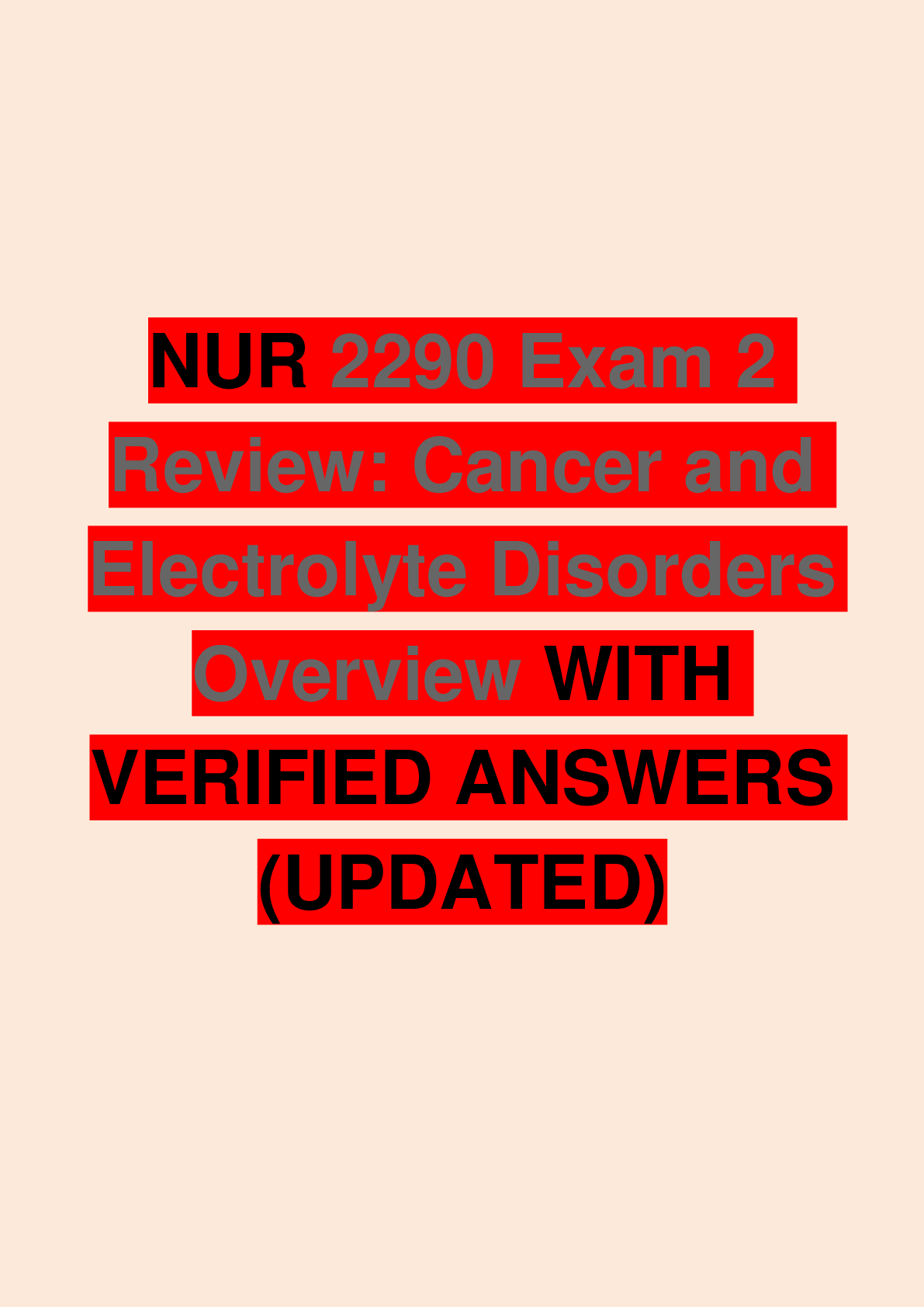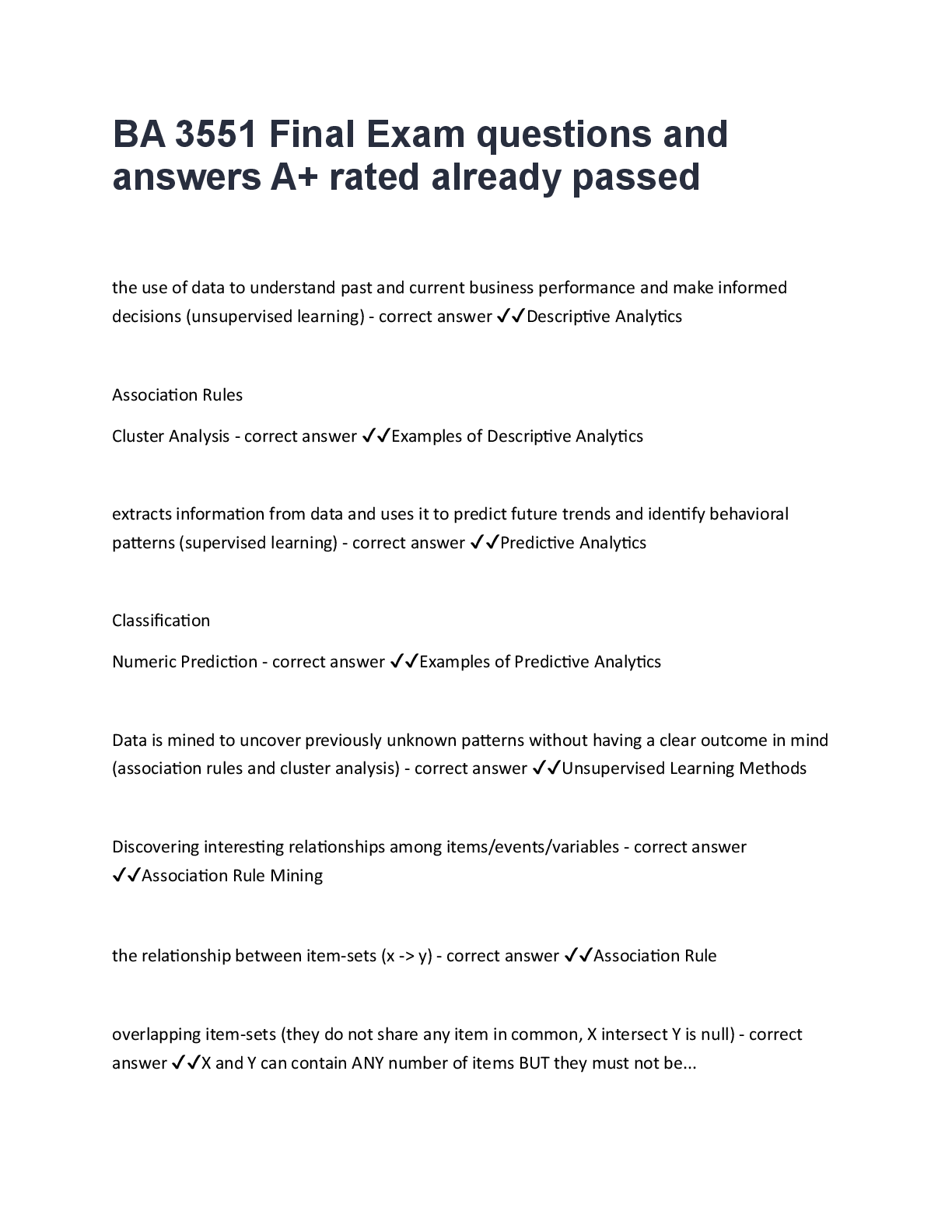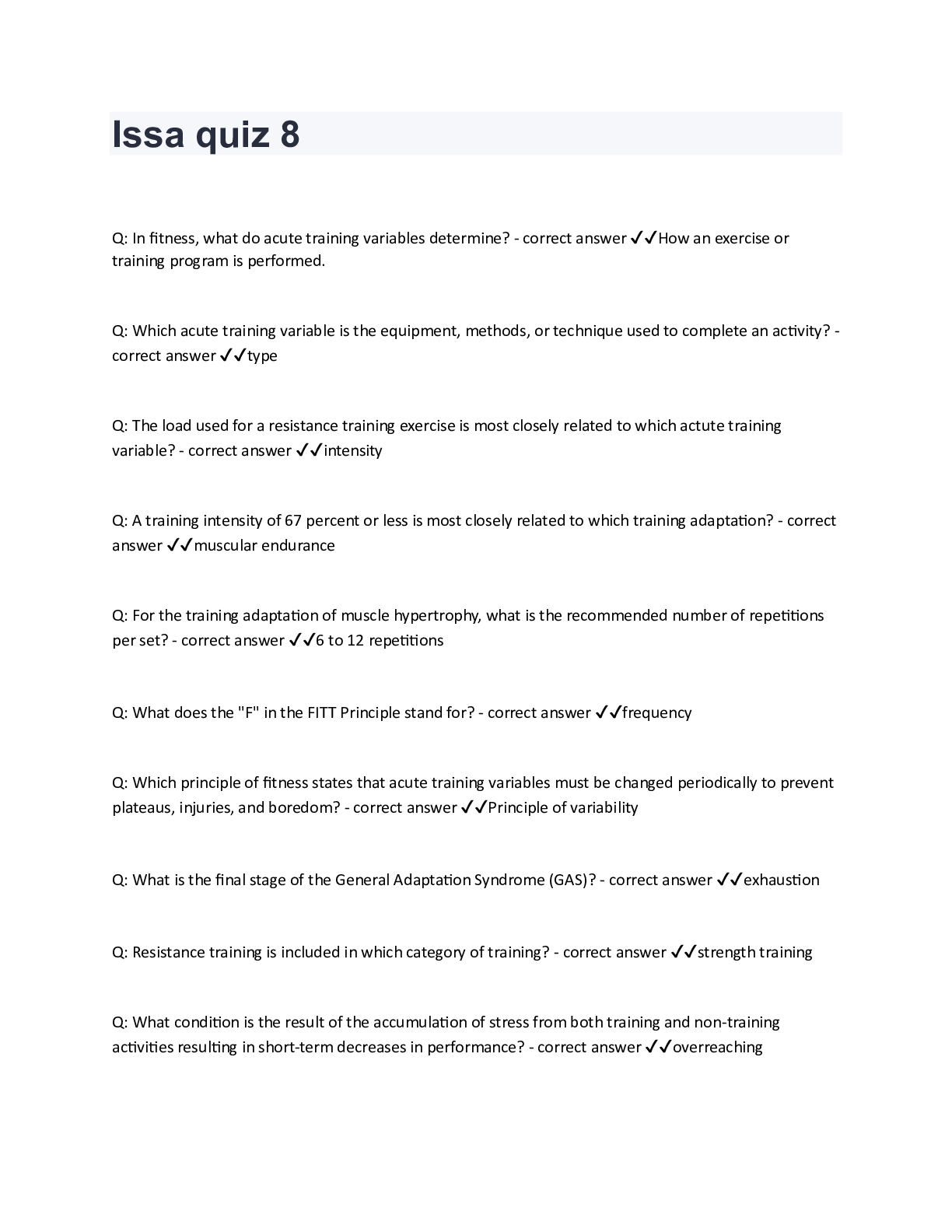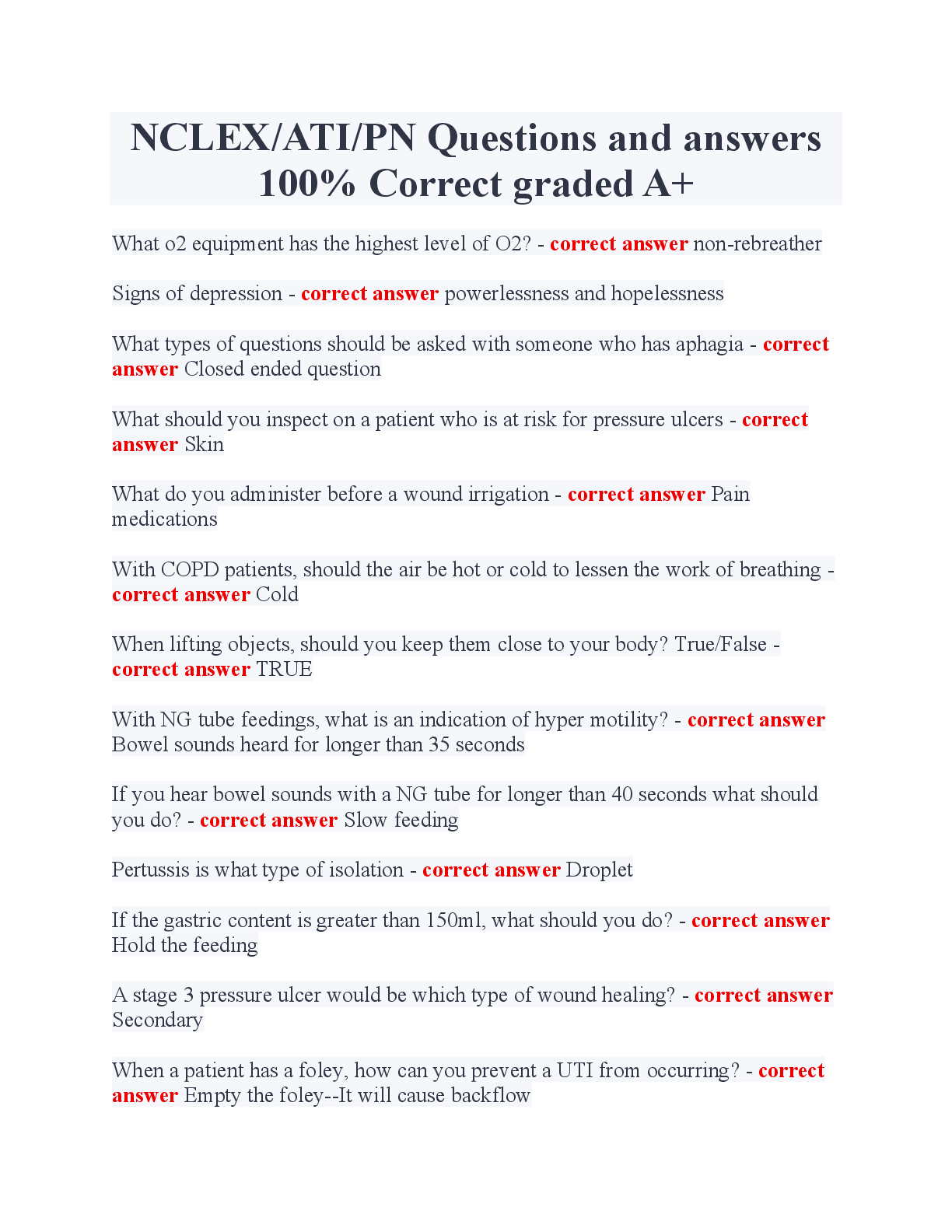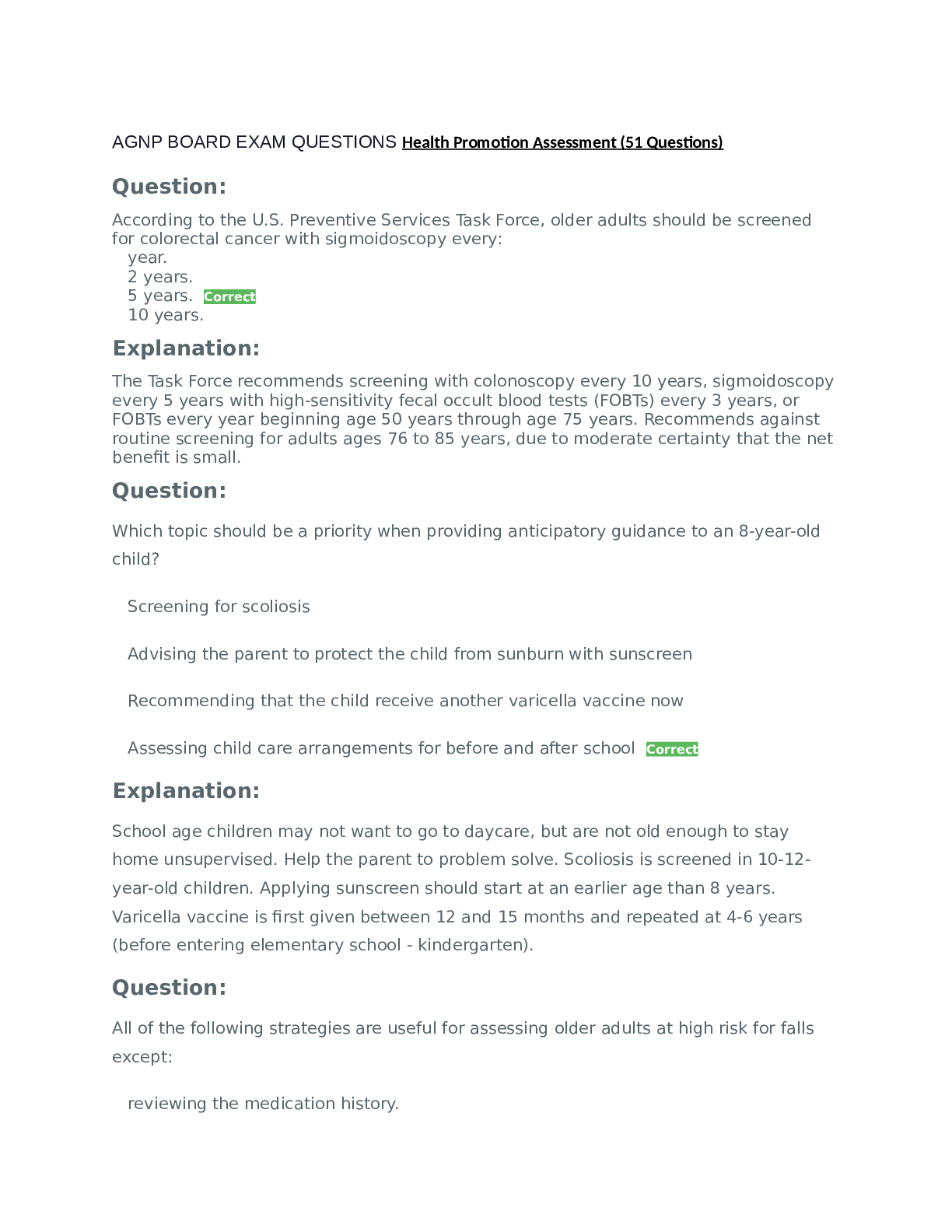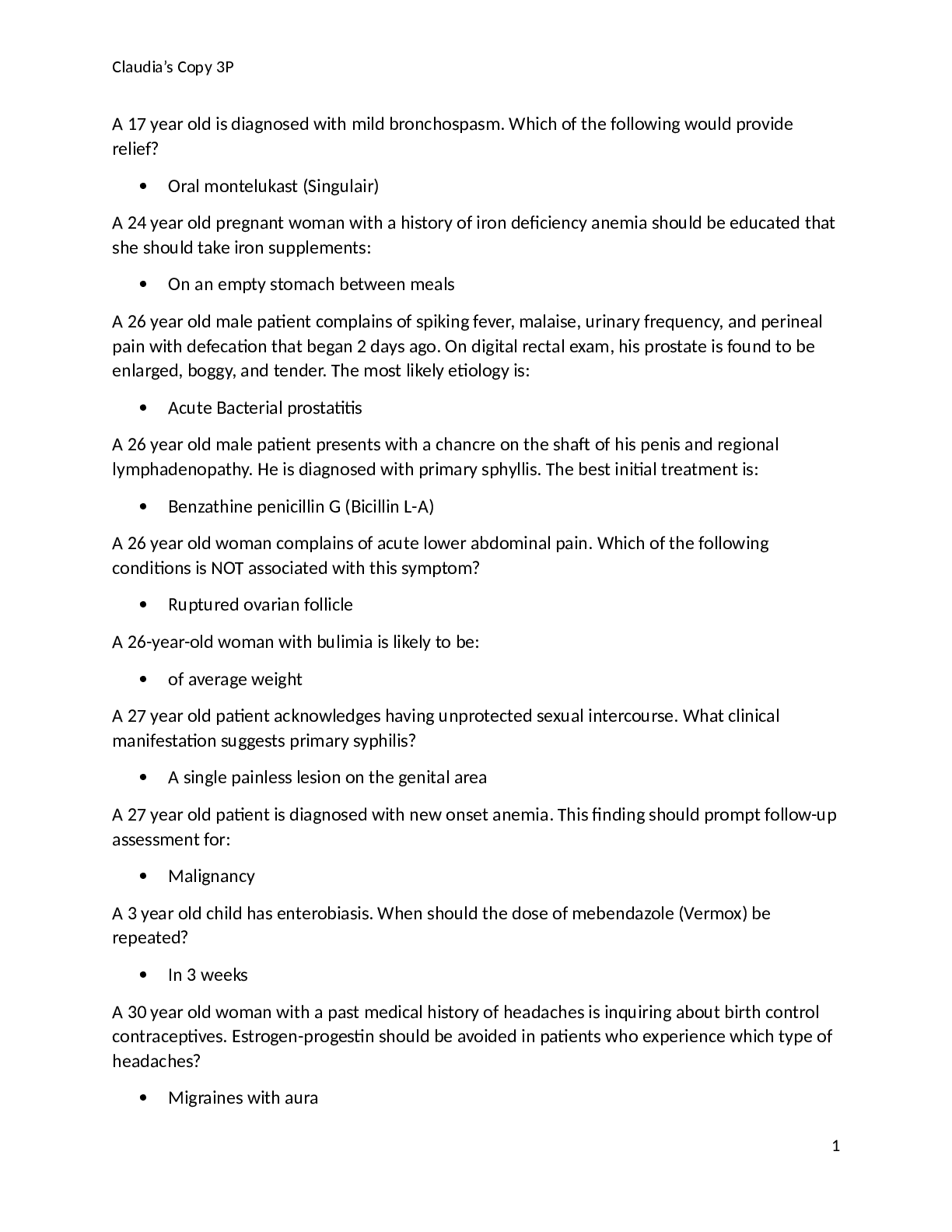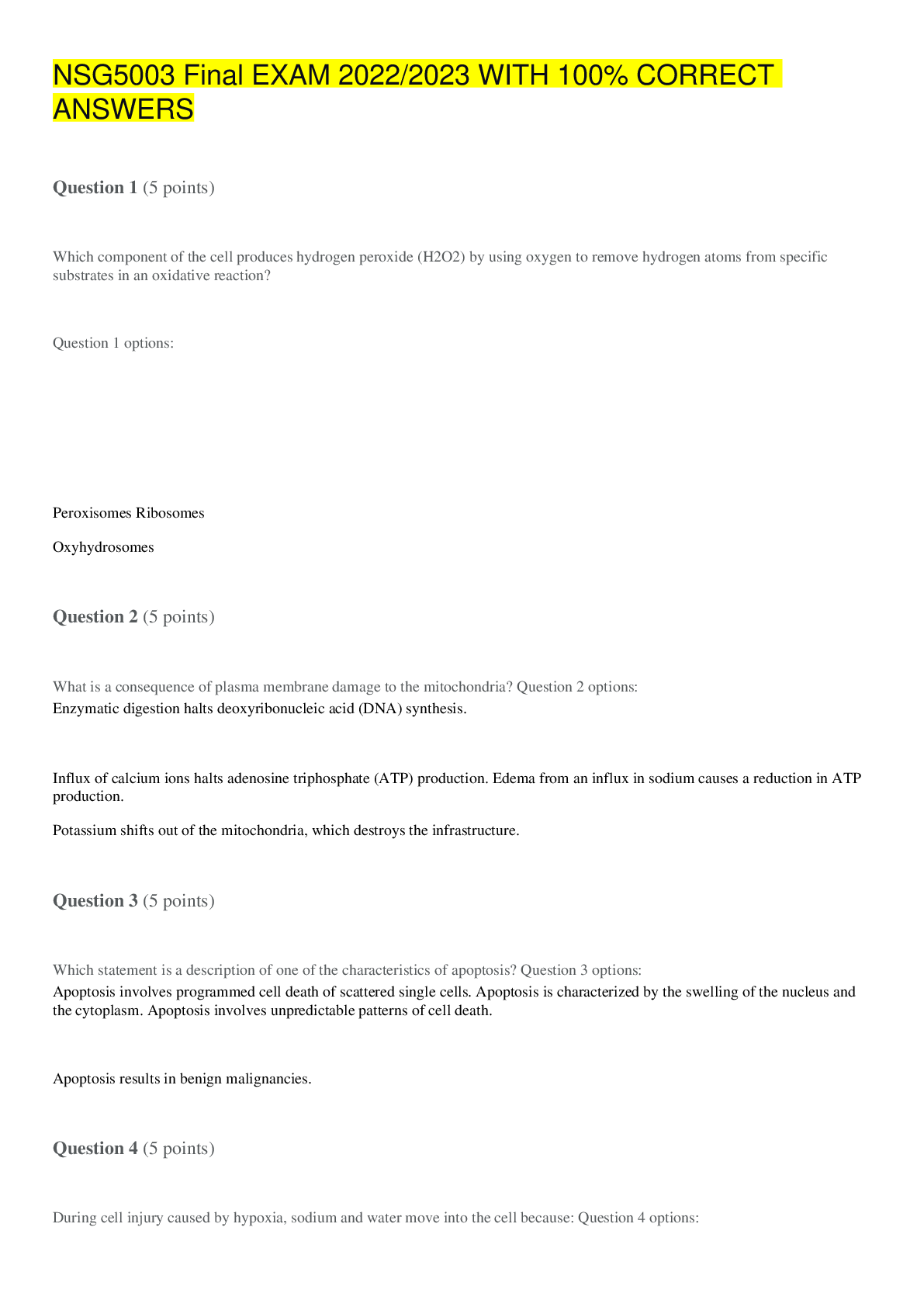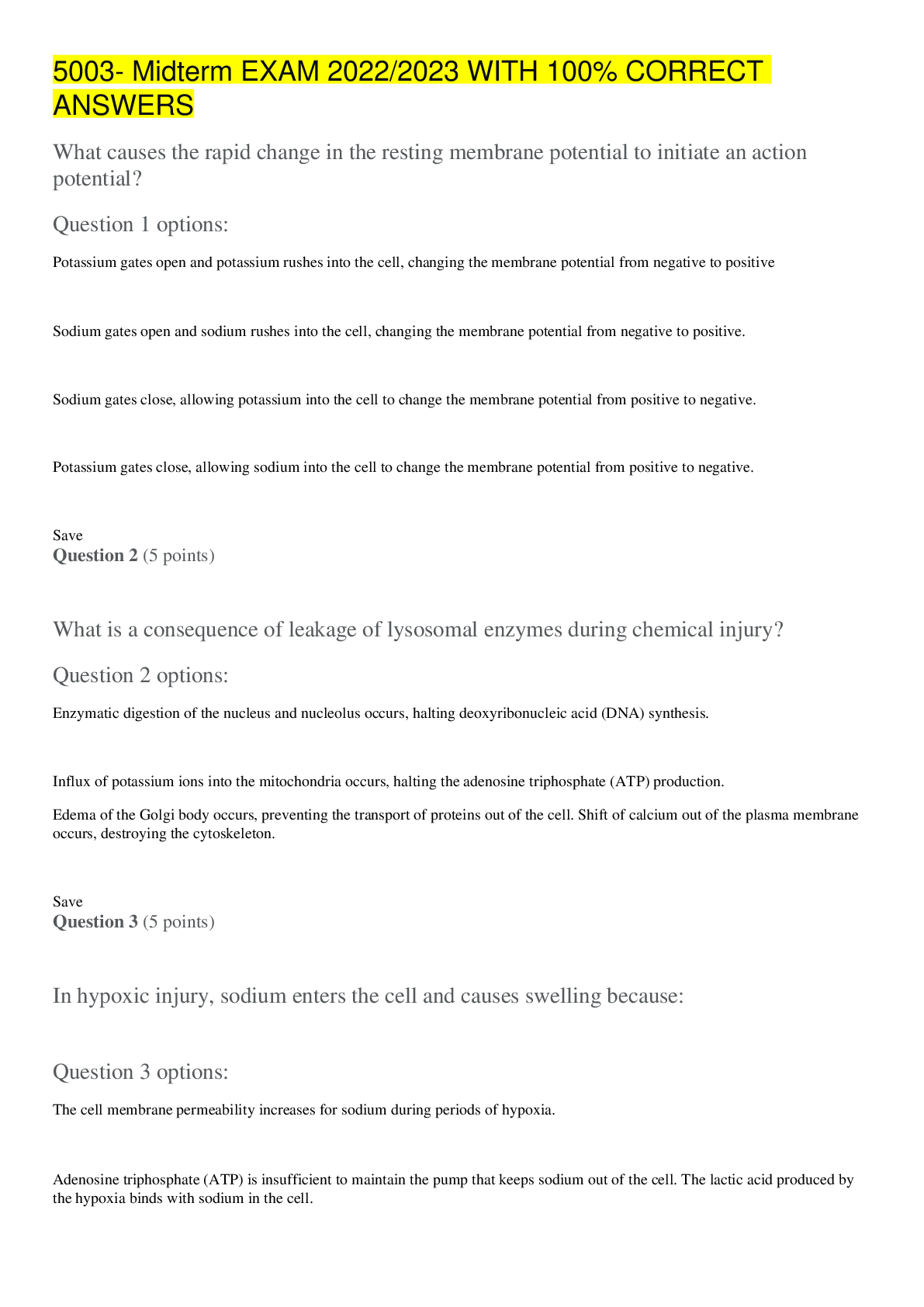Health Care > EXAM > Week 3 Quiz South University, Savannah NSG 6005,2021 (All)
Week 3 Quiz South University, Savannah NSG 6005,2021
Document Content and Description Below
1. The time required for the amount of drug in the body to decrease by 50% is called. Half-life 2. First pass: drug gets metabolized at a specific location in the body that results in a reduced con... centration of the active drug upon reaching its site of action or the systemic circulation. Drugs that have a significant first-pass effect: 1. Must be given by the enteral (oral) route only 2. Bypass the hepatic circulation 3. Are rapidly metabolized by the liver and may have little, if any, desired action 4. Are converted by the liver to more active and fat-soluble forms 3. Steady rate is when the number of drugs in the body remains constant. 4. Peak level: The speed at which drugs enter the bloodstream affects the maximum blood level that is achieved. Rapid absorption leads to higher peak blood levels, with a risk of greater toxicity and side effects. So rapid IV administration (e.g., “IV push”) produces immediate drug effects but increases the risk of toxicity and adverse effects. For these reasons, some medications, such as aminoglycoside antibiotics, are administered by slow IV infusion over 30 to 60 minutes. This allows distribution to occur, keeps the blood level from getting too high, and minimizes toxicity. 5. A laboratory result indicates that the peak level for a drug is above the minimum toxic concentration. This means that the: 1. Concentration will produce therapeutic effects 2. Concentration will produce an adverse response 3. Time between doses must be shortened 4. Duration of action of the drug is too long 6. Trough level 7. Concentration curve: The point in time on the drug concentration curve that indicates the first sign of a therapeutic effect is the onset of action. 8. Therapeutic effect Therapeutic drug levels are drawn when a drug reaches steady state. Drugs reach steady state: 1. After the second dose 2. After four to five half-lives 3. When the patient feels the full effect of the drug 4. One hour after IV administration 9. Toxicity 10. Cross-sensitivity: Sensitivity to a certain drug indicates a possible reaction to other specific drugs. 11. Cross-resistance: tolerance (as of a bacterium) to a usually toxic substance (such as an antibiotic) that is acquired not as a result of direct exposure but by exposure to a related substance. There is often cross-sensitivity and cross-resistance between penicillin and cephalosporin’s because: both drug classes contain a beta-lactam ring that is vulnerable to beta-lactamase-producing organisms. If a patient is allergic to sulfonamide antibiotics, he or she will most likely have cross-sensitivity to: 1. Loop diuretics 2. Sulfonylureas 3. Thiazide diuretics 4. All of the above 12. Gram positive organism: 13. Gram negative organism: 14. Drug resistant streptococcus pneumoniae: 15. Describe the effect of the beta-lactam ring on betalactamase producing organisms. 16. Correct antibiotic for uncomplicated UTI: Amoxicillin (Trimox) 17. Correct antibiotic for complicated UTI: ceftazidime/avibactam and ceftazolone/tazobactam 18. Antibiotics for pregnant woman: 19.. A 25-year-old female is eight weeks pregnant and has a urinary tract infection. What would be the appropriate antibiotic to prescribe for her? 1. Ciprofloxacin (Cipro) 2. Amoxicillin (Trimox) 3. Doxycycline 4. Trimethoprim-sulfamethoxazole (Septra) 20. Antiviral drugs for pregnant woman: antiretroviral therapy (ART regimen 21.Describe the principles of stewardship. The CDC Core Elements of Antibiotic Stewardship is a comprehensive approach to addressing antibiotic resistance, which includes frameworks for antibiotic stewardship programs in outpatient settings, nursing homes, and hospitals. The CDC Core Elements of Outpatient Antibiotic Stewardship (Sanchez et al, 2016) include: • Commitment: Demonstrate dedication to and accountability for optimizing antibiotic prescribing and patient safety. • Action for policy and practice: Implement at least one policy or practice to improve antibiotic prescribing, assess whether it is working, and modify as needed. • Tracking and reporting: Monitor antibiotic prescribing practices and offer regular feedback to clinicians, or have clinicians self-assess their antibiotic prescribing practices. • Education and expertise: Provide educational resources to clinicians and patients on antibiotic prescribing and ensure access to needed expertise on optimizing antibiotic prescribing. 21. Explain the prescription decision making used when prescribing antibiotics. 22. Match the antibiotic class to treat the suspected conditions: a) streptococcal pharyngitis -cephalosporins B) Pneumonia- macrolides C) urinary tract infection- sulfonamides D) Bronchitis- Penicillin E) MRSA-tetracyclines F) uncomplicated cellulitis-none 23. Identify the adherence expectations and concern for patients who are HIV positive and taking an antiretroviral drug. List the goals and expected outcomes from antiretroviral drug therapy. a) Prediction for successful treatment with antiretroviral therapy (ART) in HIV positive patients include: the patient is strictly adherent to the ART treatment regime [Show More]
Last updated: 2 years ago
Preview 1 out of 11 pages
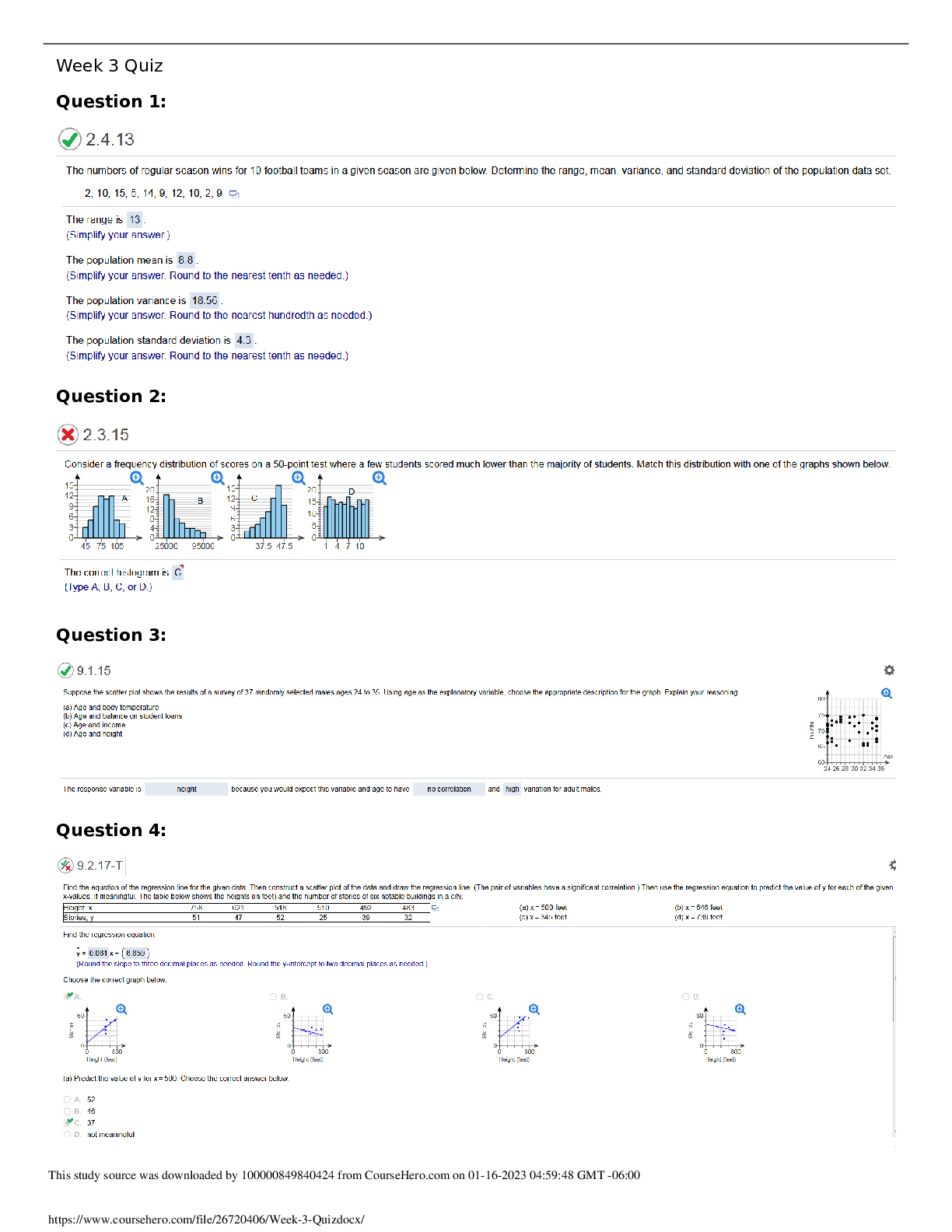
Buy this document to get the full access instantly
Instant Download Access after purchase
Buy NowInstant download
We Accept:

Reviews( 0 )
$17.00
Can't find what you want? Try our AI powered Search
Document information
Connected school, study & course
About the document
Uploaded On
Nov 09, 2022
Number of pages
11
Written in
Additional information
This document has been written for:
Uploaded
Nov 09, 2022
Downloads
0
Views
50

